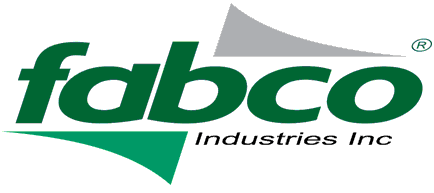Green Infrastructure is Fabco’s Focus
Fabco recently entered into an agreement to distribute an innovative product known as Focal Point that utilizes biofiltration as an effective means to remove pollutants from stormwater while being consistent with the objectives of Green Infrastructure (GI) design. Frequently on the jobsite, the engineering challenge is combining effective pollutant removal with high flow rates in a confined space. The Focal Point biofiltration system is designed to do just that.
The growing application of Green Infrastructure strategies for stormwater management has provided an important catalyst for the evolution of successful biofiltration techniques. Current Green Infrastructure strategies prioritize keeping stormwater runoff out of piped conveyance systems which outfall directly to surface waters or are part of a combined (sanitary wastewater and stormwater) system.
These combined systems can chronically overflow creating combined sewer overflows (CSO) when excessive stormwater volume enters the system in a short period of time. Removal of priority stormwater pollutants through pre-filtration techniques has historically been a secondary priority when addressing CSO’s and demonstrating Green Infrastructure functionality.
The advent of “engineered” soil media for filtration purposes combined with high infiltration rates allows for greater flexibility when designing projects to both retain stormwater on site and to reduce CSO’s while effectively removing stormwater pollutants prior to infiltration or water harvesting.
Going a step further, the use of manufactured filtration devices such as catch basin filter inserts can be combined with biofiltration systems to insure that the most effective filtration of stormwater is achieved in Green Infrastructure. This “treatment train” approach, is representative of the evolution of stormwater management strategies and Fabco is proud to be a part of of this Green Infrastructure.
Green Infrastructure Reference
Green Infrastructure refers to ecological systems, both natural and engineered, that act as living infrastructure. Green Infrastructure elements are planned and managed primarily for stormwater control, but also exhibit social, economic and environmental benefits. —www.wcel.org What is Green Infrastructure? Fact: Providing tree cover for an additional 25% of your residential lot, diverting your downspouts to rain gardens, replacing half of your lawn with native gardens and using vegetated drainage swales instead of stormwater pipes decreases the total costs by $46,286! These strategies reduce peak discharge of stormwater by 44%.”
A rain garden (or bioretention basin) is a planted depression that is designed to absorb rainwater from impervious areas such as roofs, drive¬ways, walkways, and compacted lawn areas. Rain gardens reduce runoff by allowing stormwater to soak into the ground, as opposed to flowing into storm drains and surface waters, which can cause erosion, water pollution, flooding, and diminished groundwater. (www.epa.gov) A bioswale (or vegetated swale) is a wide, shallow channel with a dense stand of native vegetation covering the side slopes and bottom.
Swales can be natural or constructed and are designed to promote infiltration, reduce the flow velocity of stormwater runoff and to maximize the time water spends in the swale, which aids the trapping of particulate pollutants and silt. A common application is around parking lots, where automotive pollution running off of the parking lot is treated before entering the watershed. (www.epa.gov)
A green roof (also known as eco-roof, vegetated roof or living roof) is a roof of a building that is partially or completely covered with vegetation and soil, or a growing medium, planted over a waterproofing membrane. Green roofs are widely used for their stormwater management and energy savings potential, as well as their aesthetic benefits. Green roofs absorb stormwater and release it back into the atmosphere through evaporation and plant transpiration, while draining excess runoff and reducing the urban heat island effect.
Permeable paving (also known as pervious paving or porous pavement), is a term used to describe paving methods for roads, parking lots and walkways. Porous asphalt, concrete, paving stones or bricks allow the precipitation to infiltrate through to the soil below.

